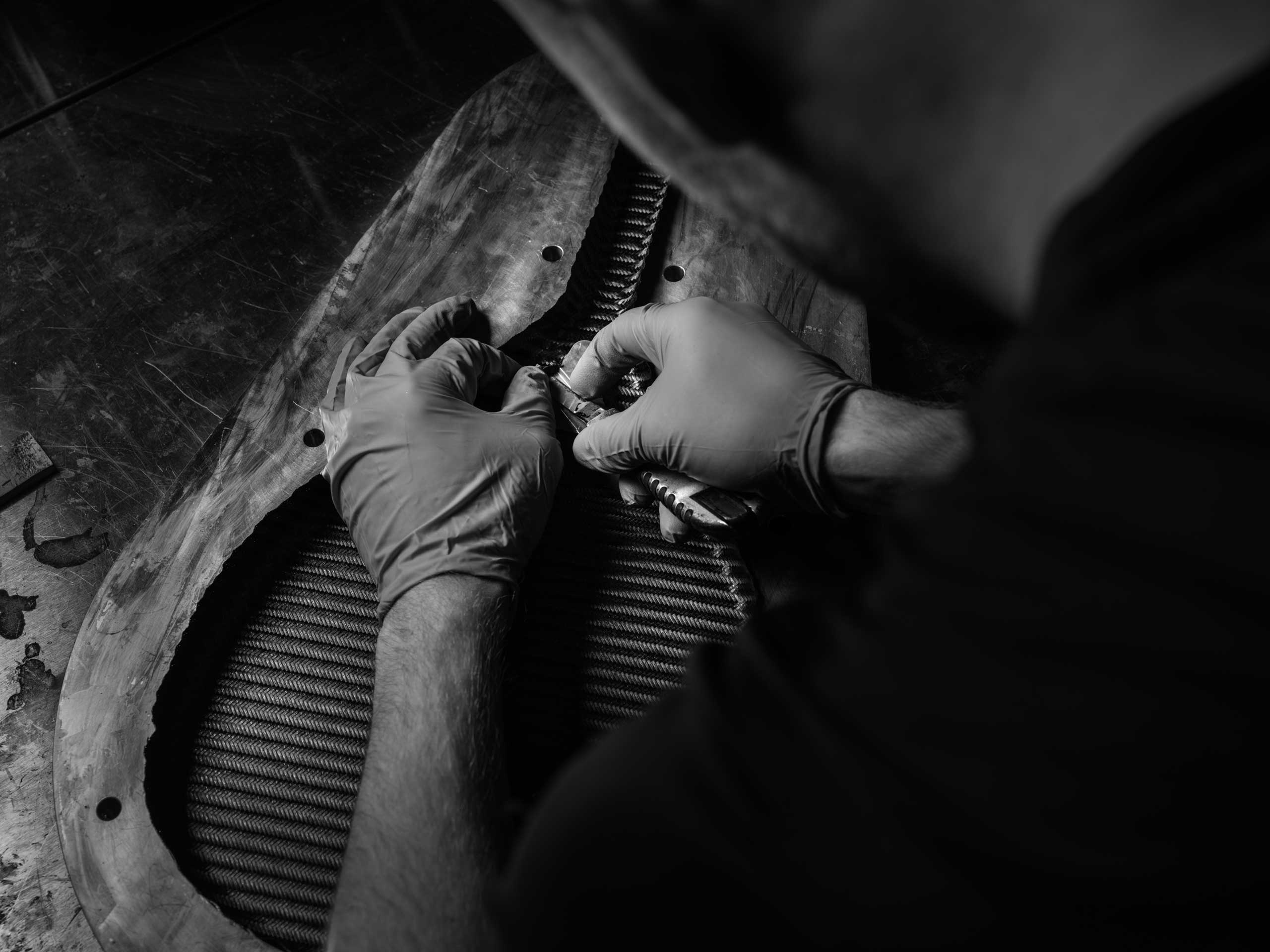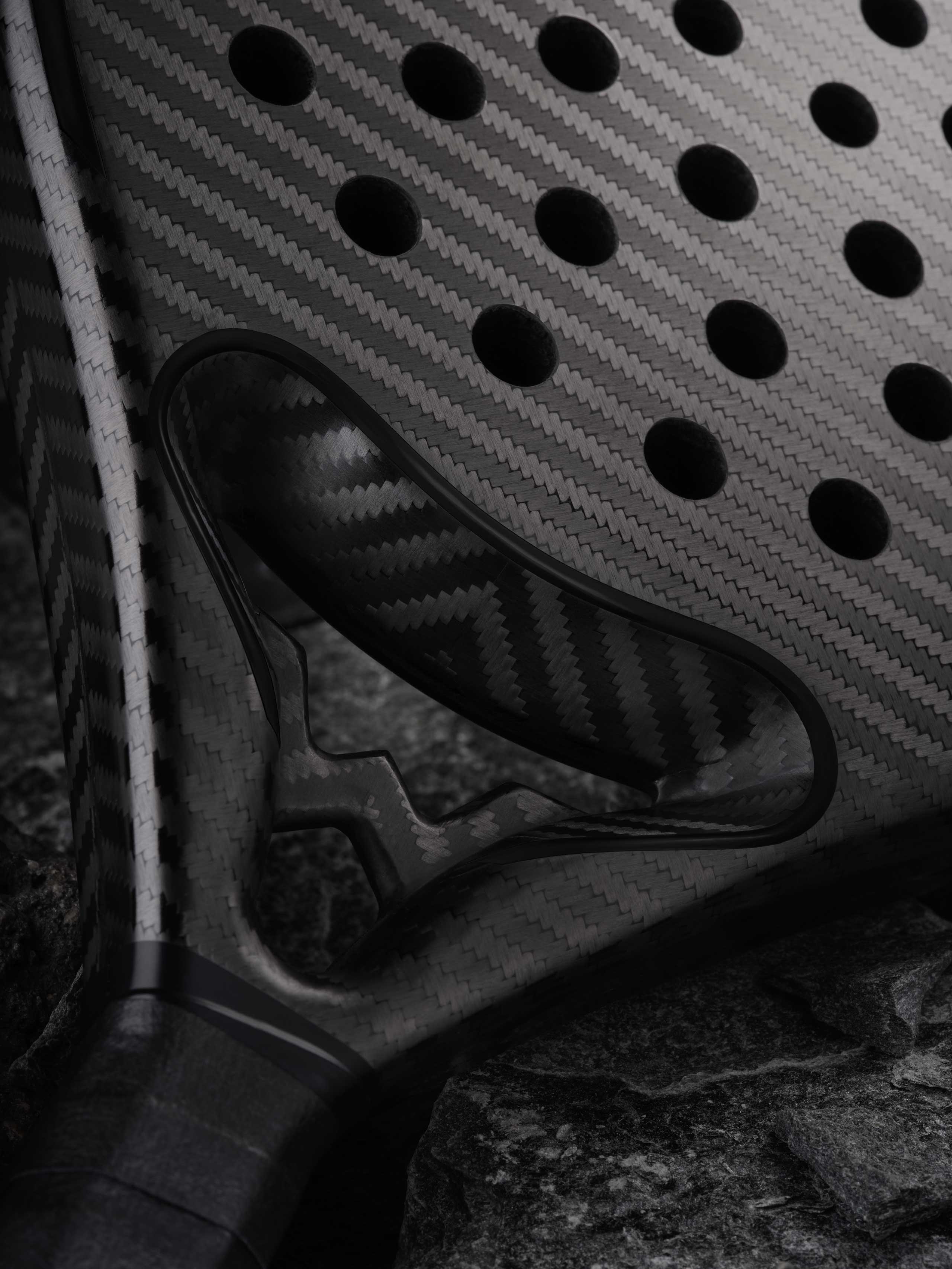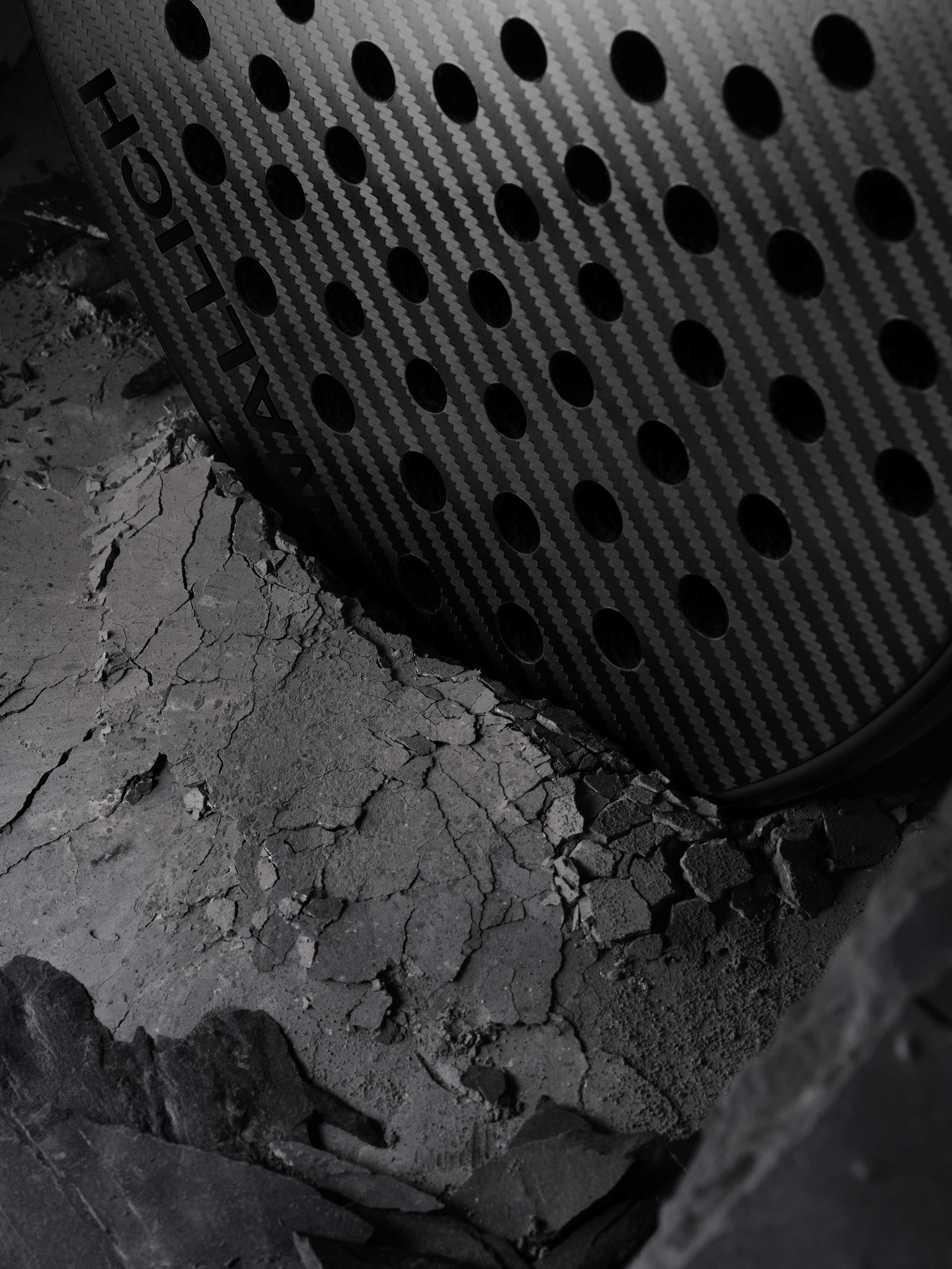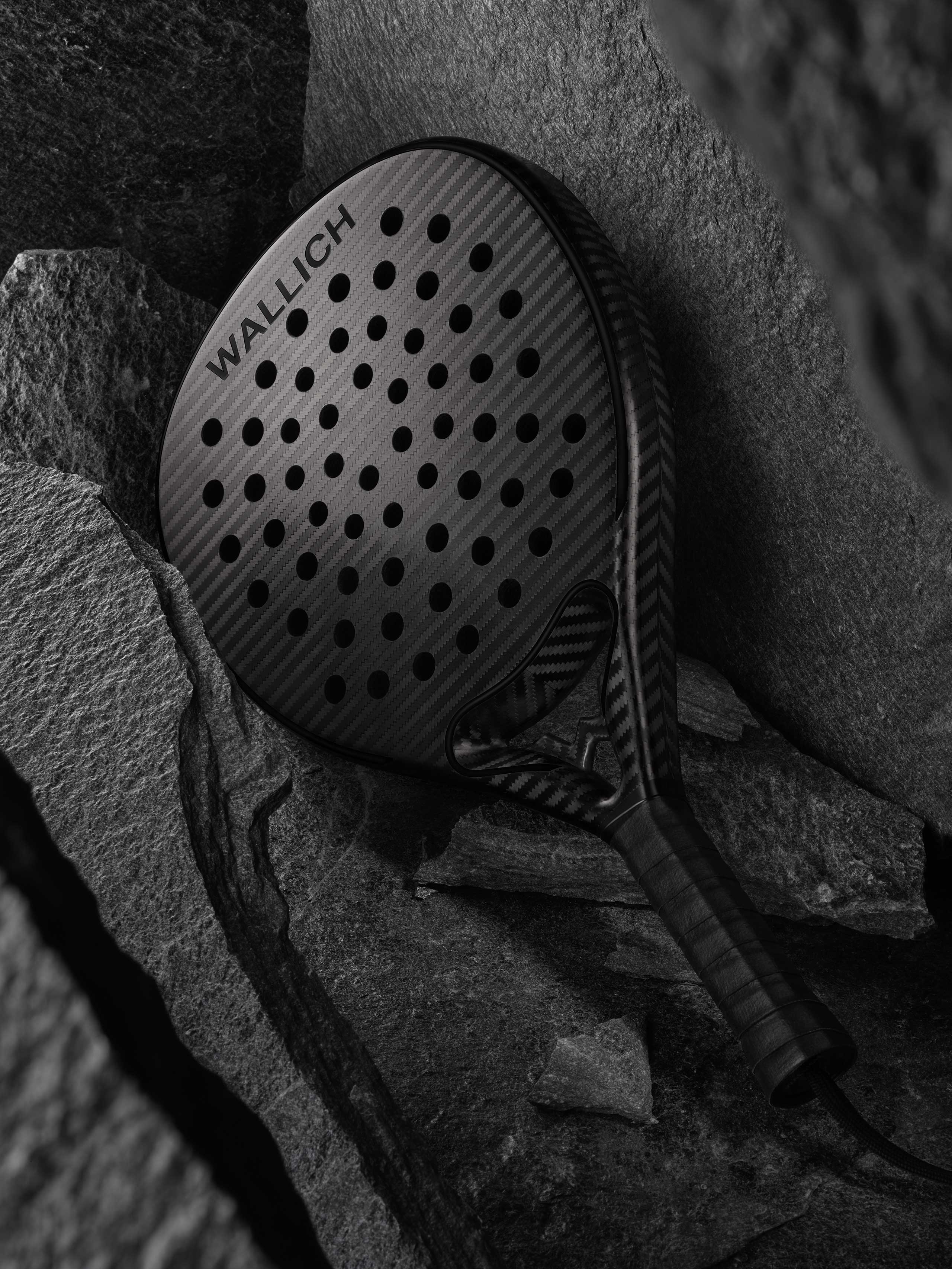Balance
Where the weight is placed affects the ability to manoeuvre the racquet. Imagine a hammer: it always weighs the same, but depending on where you hold it, it feels lighter or heavier. Holding it farther out on the handle makes it harder to manoeuvre, while holding it closer makes it easier.
Low/Middle
If you don't want your racquet to be too heavy but still like the hybrid shape, the perfect choice would be a Wallich racquet with soft foam and low/middle balance. Since the racquet is lighter and the weight is placed centrally far down on the racquet, it's easier to manoeuvre and suits those who don't have the strength to swing a heavier racquet. The low/middle balance isn't available for the hard foam for the simple reason that you shouldn't go for hard foam if you can't swing a top-heavy racquet – this can be a good guiding star when customising your racquet.
Middle
The middle balance naturally lies somewhere between low and high and is available as an option for both hard and soft foam. We usually recommend the combination of hard density foam with middle balance for experienced players who have a strong stroke but want a slightly more easily manoeuvrable racquet. If you're a more aggressive player or highly offensive player, you should opt for high balance instead. If your playing style is somewhat softer, you should go for middle balance but consider soft foam.
High
When the weight is placed higher on the racquet, it means it's heavier to manoeuvre. At the same time, you get more speed in your shots, but it requires that you possess the power yourself. A low ball in the corner is harder to manoeuvre with the high-balanced racquet compared to a low-balanced racquet. But if you have a strong smash, it's with the combination of hard foam and high balance that you'll optimise your game. So, if you have enough power to manoeuvre a heavy racquet, this is the best option for you as you’ll achieve more speed in your stroke. If you don’t, you should go for a lighter racquet.



